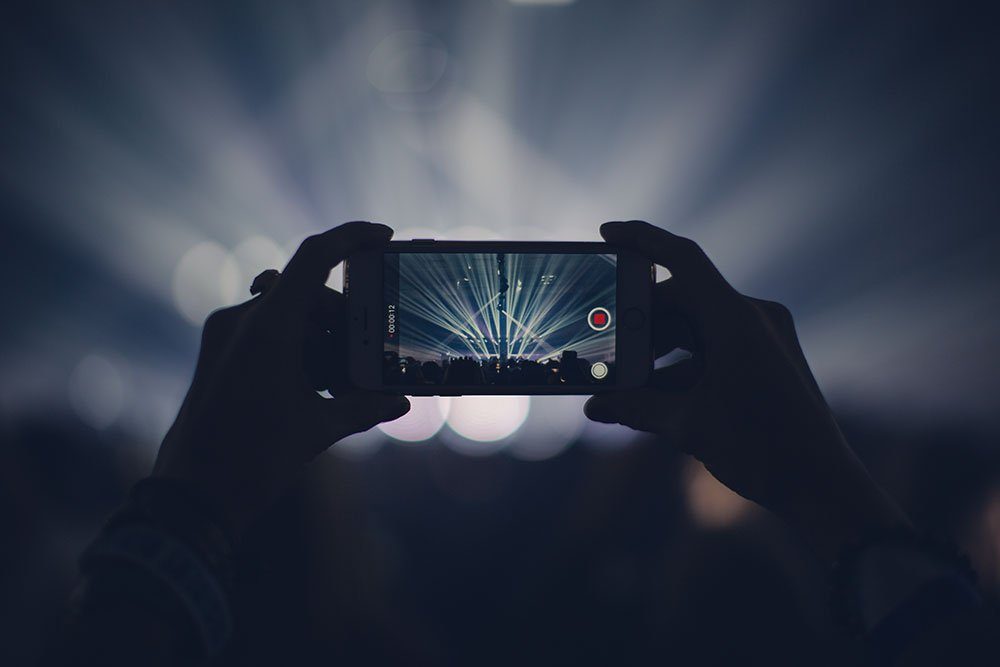4. Content Creation
Content creation is a process that starts with an idea and ends with a published piece of content, regardless if that is written, visual, audio or video content. When you create content, you have several options.
Large businesses usually have a special department, usually within marketing sector, which will be in charge of content creation as a part of content marketing strategy. Small-sized companies can hire a person to join the team with the main task being content marketing or one of the existing team members can also take up creating content. Occasionally, some business owners decide to hire content creators to work on a specific content creation project rather than being involved in the entire process of content marketing.
Regardless if you are creating content yourself or you provide instructions for someone to do it for you, it is essential to understand the process of content creation and how it goes from one phase to another.
Think about the goals
Content marketing helps you with improving business. That is a sort of the ultimate goal you will have but it is too vague. With such a goal, you will have a hard time conducting and evaluating the strategy. To make this content marketing strategy a success you need to determine more concrete goals.
Some of those goals can be:
- Increase sales
- Generate more leads
- Get more social media followers
- Improve the reputation
- Work on branding
- Get more visits

Image: https://unsplash.com/photos/k0okLYIjoxo
When you determine concrete goals, try adding some sort of a quantifier, to make them quantifiable and comparable. You can either use specific numbers (generate 1000 more leads) or percentages (increase visits by 15%). Quantifiable goals are great for reporting and analyzing the strategy and comparing the results with the previous campaigns. In all, this will immensely improve your business and the way you organize not only content marketing, but the entire online marketing.
Besides reporting and analysis, which actually comes in the end, goals are also crucial in the beginning. They help you with defining which kind of content you will create. For example, if you want to increase leads, an ebook would be a great choice. This way you give an ebook for free in exchange for an email, while at the same time you grow your mailing list. On the other hand, if you want to boost social media performance, you could benefit from images and graphics.
Choose a topic
The second step in the process of content creation is choosing a topic. Through planning and thinking about goals you have probably chosen the type of content and now you need the topic. The topic does not refer to the actual title, it is simply a subject you want to explore in that specific piece of content, regardless if that is a video, a blog article or a graphic. In this regard, you want to focus on three main things.
Relevance
The topic should be relevant to your business and to your website or blog. You want to attract people who are interested in your business. It does not matter if those are new subscribers, social media followers or website visitors. This means that you always have to consider your target group and choose a kind of topic that will be relevant to them.
Uniqueness
With the amount of content nowadays, it seems impossible to be unique and original. Despite that, you should have in mind that “in 2016, there were 15% of new daily search queries that Google has never encountered before” (Source). Even if you decide to go for a topic that someone has already posted about, you can make it unique by implementing your distinctive style.
Necessity
The topic should be something your audience needs. Helpful content that provides a solution to a problem and answers a question has proven as high-performing content, which performs best. It brings most visits, it helps with positioning your website in the search engines, and it also helps you attract the people interested in that kind of a topic.
Brainstorm the ideas
When you think about the topic, a lot of ideas come to your mind. The way your mind works, it brings a bunch of terms and phrases related to the topic, but they are all simply cluttered without any structure. This is a starting point. Put down all the ideas that you have. For example, think about chapters of the ebook, or paragraphs of the article. Write the words you associate with these concepts. Write essential phrases or terms you would want to use.
When you have everything, it is time to get organized. Try to group similar ideas and concepts. Define sections of content and categorize them. The goal here is to make these ideas structured. This way you get a coherent structure to follow when you start with the content presentation.
 Image: https://unsplash.com/photos/gcsNOsPEXfs
Image: https://unsplash.com/photos/gcsNOsPEXfs
The purpose of the brainstorming is to capture all of your best ideas. You might want to do the process again to get even more ideas. At this point, there is no need to start with content presentation immediately. Instead, the focus is to prepare the concept which will be a basic structure for adding more materials and developing the topic in details.
Content presentation
Up to this, this was a phase of preparation and now it is time for the actual content creation. This way, you present the content and this presentation depends on the type of content you choose.
Writing process
When you have the idea and concept developed, the next part is the actual process of writing. This process can involve one or several people, and this depends on both your business and the complexity of the project. Essentially, we can differentiate three types of writing roles people can take in the writing process.
Writer
This is the person who writes the content. In a company, it can be one member of online marketing team or it can be a contracted writer for the project in question. In small-sized companies, sometimes the owners or other team members can write content.
Ghost writer
Another situation with the writing is hiring someone else to write the content instead of you. The thing with the ghost writing is that the content is not attributed to the actual content writer, as per mutual agreement. Instead, a different person can be presented as a writer (one of the team members, for example) or the content can be posted without any author reference. A ghost writer most commonly is not a member of the team, but a writer hired for a specific project.
Guest writer
Guest writer is a hired writer who has his or her own blog and has gained a reputation online as a writer. Hiring a guest writer is a great opportunity to expand your reach and work on mutual promotion. Although additional promotion is one of the reasons for hiring a guest writer, this is also done when you want highly targeted content and a topic covered by an expert in this field. In this case, a guest writer is not a member of your team, but he or she is attributed as the author of the content.

Image: https://unsplash.com/photos/505eectW54k
Visual and audio/video content
With visual content, things are a bit more complex. The process of preparation and final editing is similar for all types of content, including written content, with different ways of presentations for each. There is a specific group of tasks that are involved in the process and one or several people can be responsible for those tasks.
Writing
Some types of visual content have written content, such as the case with some types of podcasts, for example. This kind of audio presentation should be prepared in advance in a written form first. This task comes first, after the preparation phase but before the creation of visual/audio content.
Designing
The next part is designing. If we talk about images and graphics, this is the main part of content creation. Besides hiring the person who designs the content, it is necessary to use design tools for this purpose. During this process, it is very important to have the main idea in mind, as well as the goals of the content creation and the company reputation. The final product should match your company vision and the way you are planning to present your brand online through this visual content.
Recording
With audio and video content, the next phase will be presenting the material and recording it. The development of technology has enabled easy recording audio and video content. It is much less complex to do it than it used to be. Pretty much any smartphone can be used for this purpose, but for the professional content creation, it is recommended to use the adequate equipment. During the recording, it is very important to think about the way you are presenting the content. The engaging and interesting presentation is just as important as the quality of the content being shared this way.

Image: https://unsplash.com/photos/b_xciWkK8Pc
Editing and proofreading
This is the last stage that precedes the publishing of the content. During this phase, the goal is to check the content material that has been created. This part is far from redundant. On the contrary, editing and proofreading, especially when it comes to written material may take the same, if not even more time than the actual content creation. Through this process of editing and proofreading, you make sure that the material is perfectly shaped according to your vision, without any errors in accuracy, grammar, spelling, video editing, etc.
Publishing
In the end, you get to publish the final product. Once you are perfectly happy with the way it turned out, you are ready to present the content to the internet users. When it comes to publishing, the platform you are going to use depends on the type of content. If it is a blog article, you will probably publish it on your own blog or perhaps on another blog where you are presented as a guest author. If the video is the content in question, you also have several options. You could host it on your server, or you could use a more popular option and publish the video on a video hosting platform such as YouTube.
Essentially, it is always best to publish on your own platform, because this way you have access to the servers and you can make sure that the content is really there, without the risk of being removed. However, the main benefit of hosting your video on YouTube, for example, is the fact that you are likely to reach more people this way due to a social character of this platform.

Image: https://unsplash.com/photos/BRBjShcA8D4
These phases make the entire process more organized and coherent, which is very important if you want to create high-performing content. As you go through each phase, you get to focus on the specific task while keep thinking about the goals you wish to achieve with this content.
